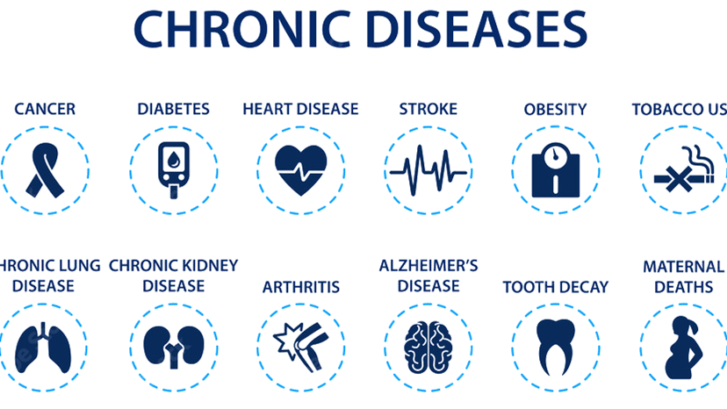
Introduction
Chronic illnesses such as hypertension, diabetes, cancer, and respiratory diseases are significant health concerns globally. Understanding the prevalence of these conditions is crucial for developing effective prevention and management strategies. In this article, we will delve into the statistics behind these chronic illnesses, highlighting their impact on individuals and healthcare systems.
Hypertension
Prevalence
Hypertension, also known as high blood pressure, affects millions of people worldwide. According to the World Health Organization (WHO), around 1.13 billion people globally have hypertension. It is more prevalent in older age groups, with individuals over the age of 65 being at higher risk. Additionally, men tend to have a higher prevalence of hypertension compared to women.
Impact
Hypertension can lead to serious health complications, including heart disease, stroke, and kidney damage. Individuals with hypertension are also at higher risk for developing other chronic conditions such as diabetes and respiratory diseases. The healthcare costs associated with managing hypertension and its complications are substantial, putting a strain on healthcare systems worldwide.

Diabetes
Prevalence
Diabetes is another prevalent chronic illness affecting millions of individuals globally. The International Diabetes Federation estimates that approximately 463 million adults aged 20-79 have diabetes. Type 2 diabetes accounts for the majority of cases, with lifestyle factors such as poor diet and sedentary behavior contributing to its development.
Impact
Complications arising from diabetes include cardiovascular disease, nerve damage, and blindness. The economic burden of diabetes on healthcare systems is significant, with costs associated with medication, monitoring equipment, and management programs. Lifestyle changes such as exercise and healthy eating habits can help prevent or manage diabetes effectively.
Cancer
Prevalence
Cancer is a leading cause of death worldwide, with millions of new cases diagnosed each year. According to the WHO, there were an estimated 19.3 million new cancer cases in 2020. The most common types of cancer globally include lung, breast, and colorectal cancers, with variations in prevalence based on geographic regions.
Impact
Survival rates for cancer vary depending on the type and stage of the disease. Treatment options such as surgery, chemotherapy, and radiation therapy are available for cancer patients. Early detection and prevention strategies, such as regular screenings and lifestyle modifications, play a crucial role in reducing the burden of cancer on individuals and healthcare systems.

Respiratory Illnesses
Prevalence
Respiratory illnesses encompass a range of conditions, including asthma, chronic obstructive pulmonary disease (COPD), and pneumonia. The Global Burden of Disease Study estimates that over 545 million people worldwide have a respiratory condition. Factors such as air pollution, smoking, and respiratory infections contribute to the rise in respiratory illnesses.
Impact
Respiratory illnesses can significantly impact an individual's quality of life, leading to breathing difficulties and reduced lung function. Managing respiratory conditions requires healthcare resources such as medications, inhalers, and oxygen therapy. Preventive measures like avoiding cigarette smoke and environmental pollutants are essential in reducing the prevalence of respiratory diseases.

Conclusion
In conclusion, the prevalence of chronic illnesses such as hypertension, diabetes, cancer, and respiratory diseases continues to pose significant challenges to global health. By understanding the statistics behind these conditions and their impact on individuals and healthcare systems, we can work towards raising awareness, promoting healthy lifestyles, and supporting ongoing research efforts. It is imperative that we prioritize prevention and early intervention strategies to combat the burden of chronic illnesses effectively. Stay informed, stay healthy, and together we can make a difference in fighting against chronic diseases.
FAQs
Q: What is the prevalence of hypertension globally?
A: Approximately 1.13 billion people worldwide have hypertension, as reported by the World Health Organization.
Q: What is the most common type of diabetes globally?
A: Type 2 diabetes accounts for the majority of diabetes cases, with lifestyle factors contributing to its development.
Q: How many new cancer cases were diagnosed in 2020 according to the WHO?
A: The World Health Organization estimated 19.3 million new cancer cases in 2020.
Q: What are some common respiratory illnesses mentioned in the article?
A: Respiratory illnesses include asthma, chronic obstructive pulmonary disease (COPD), and pneumonia.
Q: How can individuals reduce the risk of developing chronic illnesses like hypertension and diabetes?
A: Lifestyle changes such as regular exercise, healthy diet, and avoiding smoking can help reduce the risk of developing chronic illnesses.


0 Comments